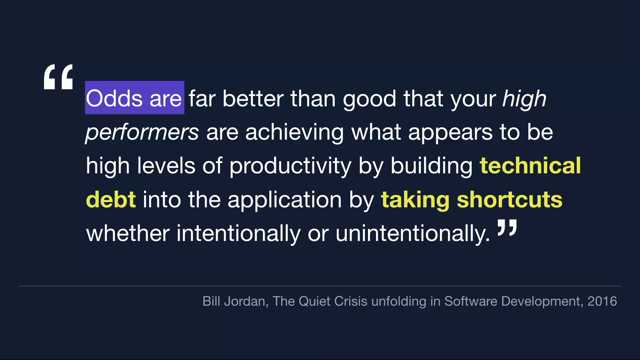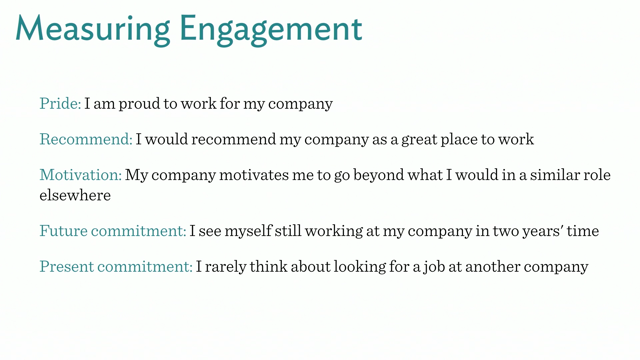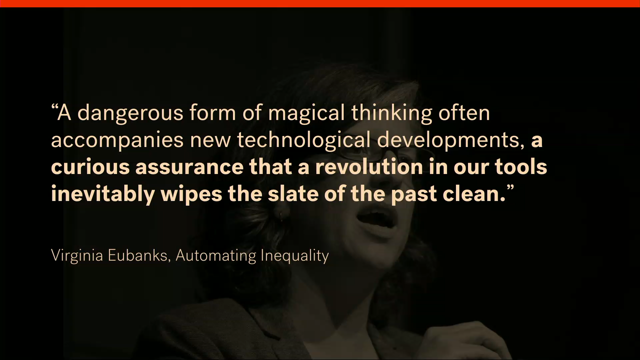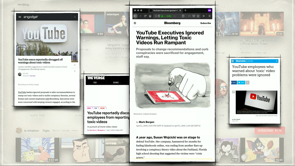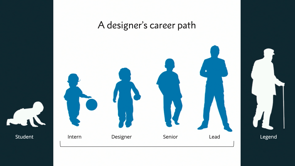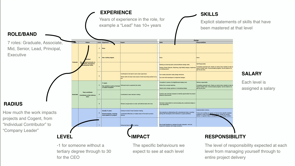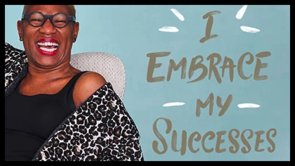Design leadership and mental health: challenges, questions, and (some) answers
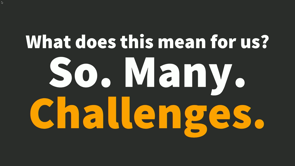
- Hi, I'm Maria and I'm going to be talking today about design leadership and mental health. Challenges, some challenges, some questions and some answers.
Before I begin, just somehow skipping notes, content notes.
This will be possibly a confronting talk because mental health is a difficult topic so obviously, if you know that you have difficulty or certain sensitivities about that subject, take care of yourself.
I will be quite direct and blunt because this talk is based on, oh no, what's happening? This talk is based on like the perspective of someone who is actually dealing with mental illness.
That's me.
That leads me to the second content note which is that this is very much grounded in a specific lived experience.
It's not universal.
It's not meant to be.
I don't pretend to speak for all people who deal with mental health issues.
So, just keep that in mind.
These are basically idea generating things instead of like hard, set in stone things.
All right.
So, this is exhibit A.
This is me with my boss last year.
My boss left Google to start our company which is a regional startup.
Our goal is basically helping regional communities and businesses grow using the kind of technology that people expect in Melbourne but not in regional areas.
Our region is, used to be one of the most digitally illiterate regions in Australia.
Recently, it's apparently the fourth most improved in digital literacy.
So, we do a lot of exciting work, we do web development, we do machine learning. We're currently running a startup pre-accelerator which is the first of its kind in our region. We're doing a lot of regional firsts for our region.
It's a very exciting work, and it's incredibly fulfilling to be leading design at a company that does work that makes a difference to the people that you meet every day.
So, I've been here.
My company is awesome.
I have a really awesome job.
We have a really terrible website because I built it within a weekend two years ago.
But we've experienced a lot of really amazing growth.
This time last year there were only four of us, now there is gonna be 11.
So, I think career-wise I'm doing pretty well. I'm in a really good place.
I have, however, also been here.
This is a photo of the Latrobe Regional Hospital. I spent some time here a couple of years ago in the inpatient unit of the mental health ward. I was there for several days due to extremely terrible mental health, and, you know, they were like okay, sticking to hospital.
So, it's very interesting because what I'm dealing with and I have been dealing with for quite some time is the idea that I want to lead design and do a really good job of it while at the same time dealing with some extremely severe mental illness that, you know, is not something that is a quick fix.
The thing is 20% of people experience mental illness in any year in Australia.
So, that's one in five.
At my company, more than 50% of us have dealt with mental illness at one point or another in our lives.
Actually, right now at the moment 30% of us need to have certain accommodations made for them due to mental illness.
It's a huge issue and I think it needs to be talked about a little more.
We kind of tend to talk around it.
So, this talk is a little bit of me trying to actually talk about it directly.
What does this mean for us? Well, it means that we have so many challenges to deal with, and I'm very familiar with them both as someone who leads design while dealing with mental illness, and as someone who manages team members, who have mental health issues of their own. I thought that it would be pretty effective to show you rather than to tell you what it's like.
So here, let's pretend, let's look at a day in the life of a design lead.
I call this the healthy design brain, the part of the brain that's actually dealing with your design work.
Let's say you're healthy.
You don't have what I do.
So you're working on client revisions at any given day.
Let's say you're leading a team meeting so that's 20% of your brain energy, your productivity, your concentration, your time, basically the battery power in your brain.
Okay, let's say you're preparing for a design workshop that takes up 50% of your concentration and your time because you really want to impress this client. Cool.
Let's compare this to my design brain on the same day given the same tasks.
Team meeting.
I'm devoting 12% of my mental resources to it. Client revisions, I'm devoting 18%.
Design workshop, instead of 50% I only have 38% of my energy to give.
Why is this? I don't think it's because I'm lazy or because I care less about it, or because I try less hard.
It's just that there's other things that are also taking up the brain energy.
For instance, there's coping mechanisms kind of like, you know, a lot of people, we put on this polite professional mask when we are in workspaces.
For me it's less of a mask and more like a full body suit of steel armour.
It's heavy.
It's exhausting to carry it around, and you have to do it all the time while you're working.
Oh my god.
Team lead anxiety.
It sounds really silly but just like the other day I was really working very hard to fight thoughts that said that this intern that we'd hired just a month ago would make a better design lead than I would. Obviously that's not true.
But that's (laughs), at least we hope that's not true.
But, you know, it takes effort to keep those thoughts away and to keep them from spiralling into this pattern where you're, the next thing you know you're offering the intern your job.
That's 8% of my energy.
Exhaustion and overwhelm.
I don't sleep well because anxiety and depression keep me up a lot.
Overwhelm, it's kind of like when every single stimulus just irritates you, it's kind of like an itch. Think of it as hay fever but in the brain.
It's awful.
And then, of course, you have my favourite, absolute dread, which takes 3% because it's not as present but it's still there.
So, designing in my brain is kind of like having all of these voices, the extra ones, talking to me while I'm trying to work, and I'm holding a door closed with my other hand because depression is trying to kick it in and say you know, you should just give up.
So it's kind of like I'm working like this, and this isn't even my dominant hand so I'm having to do all this left-handed.
It's horrible.
So, knowing all of that and knowing how bad it gets, I was like well, I really love my job, I don't want to quit my job, but I found myself perpetually facing this question that can I actually be a design lead while I have a mental illness? And number two, how can I help my team members who also have mental health problems of their own? So I thought because I really didn't want to quit my job, I love it.
And then I decided okay, well, you know, you're a designer, you're meant to create solutions.
So, create a solution, solve the problem, do the thing.
Let's pretend that this is a problem.
I mean, it really is, isn't it? You saw this.
That's terrible.
So, if we're going to pretend that this is a problem and attack it with the same tools that we apply to the design work that we do, obviously we ask okay, what questions can we ask first? Approaching this I asked about my parameters for the problems, my boundary values.
I used to work in physics so I approached this from the kind of like boundary value problem approach.
What are the conditions that have to be met as extremes? Number one, I have to be able to do my work, including meetings which I hate.
They're horrible.
But they're really useful and helpful sometimes. Okay, I have to still be able to lead.
My team should not suffer just because I'm having a really bad mental health day.
I still have to be able to collaborate with other teams, which is actually quite challenging because, or other two teams.
One of them deals with community engagement so they're always on the ground and moving. The other team that I collaborate really closely with is the backend development team with the team leaders in Melbourne so I have to be able to be really good at communicating with them.
And of course, my performance and my quality of work should still be excellent.
That's non-negotiable.
Being able to say that I do top-tier work is something that is an absolute must have because the moment that I start thinking that my mental illness is preventing me from doing the best possible work, work that can compete with other people, then I feel that's basically admitting defeat.
And I don't like that.
So, the questions that I came up with included how might we make the workplace safer and easier to work in? I say safer, I don't say safe.
One thing that we have to acknowledge is that no workplace will ever truly be 100% safe.
And you can't really eliminate all difficulties but we can try to make it a little bit better. How might we help enable or strengthen coping mechanisms? To use my sort of armour analogy, how might we make it easier to carry that suit of armour? Can we have Kevlar instead of steel? And how might we answer or accommodate specific needs? Because mental illness expresses itself in such a personal and individual and unique way to each person.
Some people have very specific needs.
How can we be flexible enough that we can answer those needs when they arise? So, here are some answers.
They're some fundamental concepts.
I'm not gonna give you like super specific things but these are basically the concepts that I built my solution on, and this is, to emphasise again, it's just my solution.
You may come up with something entirely different. This is what has worked for me and for my team.
So first you have to start by being conscious of the necessity to build a space for listening and then deliberately building that space.
When I say space I'm not talking just about the physical boundaries of a workplace.
But I'm also talking about the emotional and metaphysical space where support exists as a default, where people can learn to expect support and that the support has to be there not just popping up when someone is in crisis, but it has to be there from the very beginning.
And it has to be a space where people can feel able to talk about their needs.
And of course it has to be co-designed with people who may need it.
Realistically speaking, this means everyone because everyone can experience mental illness. But of course, if you or someone on your team has already spoken up and said look, I'm going through this, then absolutely, particularly include them in designing that space, whether in the physical makeup of it, or in the processes that you build around this system.
Of course you have to educate yourself.
You have to learn and listen sincerely.
By learning I mean you actually have to actively go out and try and increase your knowledge about this thing with the same seriousness that you go out and learn about management techniques.
And by listening I mean that when someone talks to you about what they're going through, your instant reaction is not to judge them or try to come out with an evaluation but simply take it in at first, because you have the respect that they are the experts in their experience. On the flip side you also have to communicate openly and honestly.
The reason that my team is able to function even when I'm having mental health crises is because they know what's going on.
I've always been honest with them from day one about the way I run my team and about the issues that may arise when I'm having mental health problems.
And I've found that instead of creating a stigma or them performing less, they actually trust me more because I've been honest about these issues that may affect the work.
And so when they feel that they also may be going through tough times, they can approach me about it.
This is a really helpful thing when you're doing the space building is you have to consider common patterns and possible support systems, and preferably you want to do it before the flash point or the problem actually arises.
For instance, sensory overwhelm is really common. So consider having designated quiet spaces or if you can't do that, invest in some noise cancelling headphones. At my office we have a rule that if I have my headphones on, please don't talk to me, try and slack me.
You can only try and talk to me if it's like the building is burning down.
But you have to be able to create spaces that people can retreat to, that are quiet, that they can kind of like recharge in.
Anxiety and doubt are super common, especially for creative people.
So, I've found that I have regular one-on-ones with my team and that actually really helps because when I run my one-on-ones I try and focus on the things that I think might be causing them some worry, and I try and say so, how are you feeling about this? How was your work this week? Not just in terms of performance, but how you felt about it? And depression about negative outcomes.
It's hard, design is hard, we live in the pit of despair like 80% of the time.
So, obviously, you have to be conscious and start developing this habit of checking in after any losses.
Just basically having something that is already a strong support system that exists.
So when someone falls there is something to break it.
Make a space for specific accommodations.
One of my things is that tactile stuff, physical touch actually really helps me cope. So I asked my boss for like a really expensive bean bag.
That's massive, it's tall and that means this tall.
I explained what I needed it for, and she gave it to me without me having to fight for it.
And that really meant a lot to me because it meant that she took my needs seriously and that the company was investing in my productivity and my health.
It sits in my office now, it's amazing.
You can take a nap on it.
It's so good.
Okay, and of course as you're building the system you have to develop robust processes with backups, and this ties into my previous point.
With backups means that every single thing you do, for instance, client meetings, for instance, the most important one, you have to have contingency plans for someone not being able to make it because they've suddenly had a mental health crisis that very morning.
Who are you gonna call? Ghostbusters.
(laughs) But you have to have designated backups.
You have to have all the information about your projects in a space where all the team members can access it so that if someone suddenly goes, you know, on medical leave, they can, everyone who is left rather, can continue working.
They know what's going on.
Basically, the information space has to be designed so that everyone can share things in as easy and open a way as possible.
And that requires a lot of trust which ties into the previous points.
This is the hot thing.
You have to be aware that you will fail.
So, I've been thinking about design leadership and mental health for two years.
That's how long I've been a design lead at my company.
Throughout those two years I've spent a lot of time and effort developing these systems and these fail-safes and these processes to make it so that my mental health and the mental health of my team members was as taken care of as possible.
We had all sorts of check-ins, we had like processes that were like customised to each person's needs, whether they really had trouble with competing tasks and got really overwhelmed, or whether they had a lot of anxiety and had trouble saying no, so all the people who were managing them had to be aware of that and had to be able to check in and make sure that they were still okay.
That kind of thing.
It was all very detailed.
I thought it was robust.
Two weeks ago, I had a breakdown at work.
It was severe enough that I was given leave for four months, four months, four weeks! For four weeks from work.
I couldn't work at all for two weeks.
It was bad enough that actually my doctor and my psychologist wanted me very, very badly to go into hospital.
And so at that point I had this really terrible moment of despair because I was thinking well, look, I've worked so hard to build this space where I can actually do my work, work that I love, while dealing with my illness.
And I work really hard in managing my illness. And yet at the end of the day, does any of that really matter? Does any of the hard work you've put in really matter when it's so easy to fail? The answer is, of course, absolutely.
Because if I hadn't put in any of that hard work, my team would have exploded, my projects would all have scattered to the winds, we'd have lost several important clients.
Because of the backups and the contingency plans work still continued.
Someone was able to step in as intern design lead and take care of any emergencies.
But the thing that this point deals with is that by being aware of the possibility of your failure that actually builds resilience into your systems because you should, from the very start, know that you are going to fall down.
So you should have a plan for how you're going to get back up.
I'm very lucky I have a very supportive company. So, I am getting back up slowly, and this is a point I think that we really need to be aware of as designers. Building resilience into our systems, being able to get back up because you are going to fail.
Illness, you can't really prepare for it.
No matter how complete you think your system is, it's not.
You have to be kind to yourself.
Because with the possibility, with basically the very high possibility of your failure, it may sometimes feel that you're fighting an uphill battle and you're not getting anywhere. It may feel, if you are dealing with mental health issues yourself, it may feel like you're making progress only to be set back even further.
That's how I felt when I had my breakdown.
Or if you're dealing with a team member who has mental health problems, it might feel that you're perpetually in this atmosphere, in the state of uncertainty because you don't know what will set off the next crisis.
It's very, very difficult, and one of the most vital things that you can do to deal with just a sheer complexity and difficulty and at times the seeming impossibility of this task, is by being kind, not just to your team members, all of them, but also to yourself whether you're dealing with mental health issues or not.
Allowing yourself to fail, to do not perfectly, to do imperfectly, to perform below your expectations, to make mistakes.
It's fine.
But you just have to be kind and you have to remember that and build it into, I think, your daily routine.
So, while I was recovering from my breakdown, the recent one, I spoke with a very good psychiatrist and during our conversation he was expressing, I don't know if it was amazement, or like admiration, or horror, at like everything that I had to deal with in terms of my illness while still working, and he was saying, you've done this much while dealing with, you know, all of that crap.
Have you ever thought about what it might be like if you had to deal with less of it or none of it? And I was sitting on his couch and I still remember that question hitting me like a blow to my chest because no, I actually had not thought about what it would be like to deal with less of it.
But then I realised that actually design leadership around mental, while dealing with mental illness, is actually about exactly that.
It's about envisioning a future or a possibility where people have to deal with less of the crap.
And then just imagine how much more amazing they could be and how much more of themselves they could give to the work, and imagine all of the amazing things that we could build then.
So I think thinking about this issue, talking about it, and actually trying to come up with solutions for ourselves, for the people we lead around this issue, is actually absolutely vital to design leadership because let's face it, a lot of our work really centres around making better experiences for humans, making it better to live as a human.
And mental health is a major component of that. So let's start treating it like it and let's start talking about this and start building spaces for people so that they can actually do their work and live in as easy and safe and mentally healthy, or at least coping with it, way as possible.
Thank you.
(applause)
